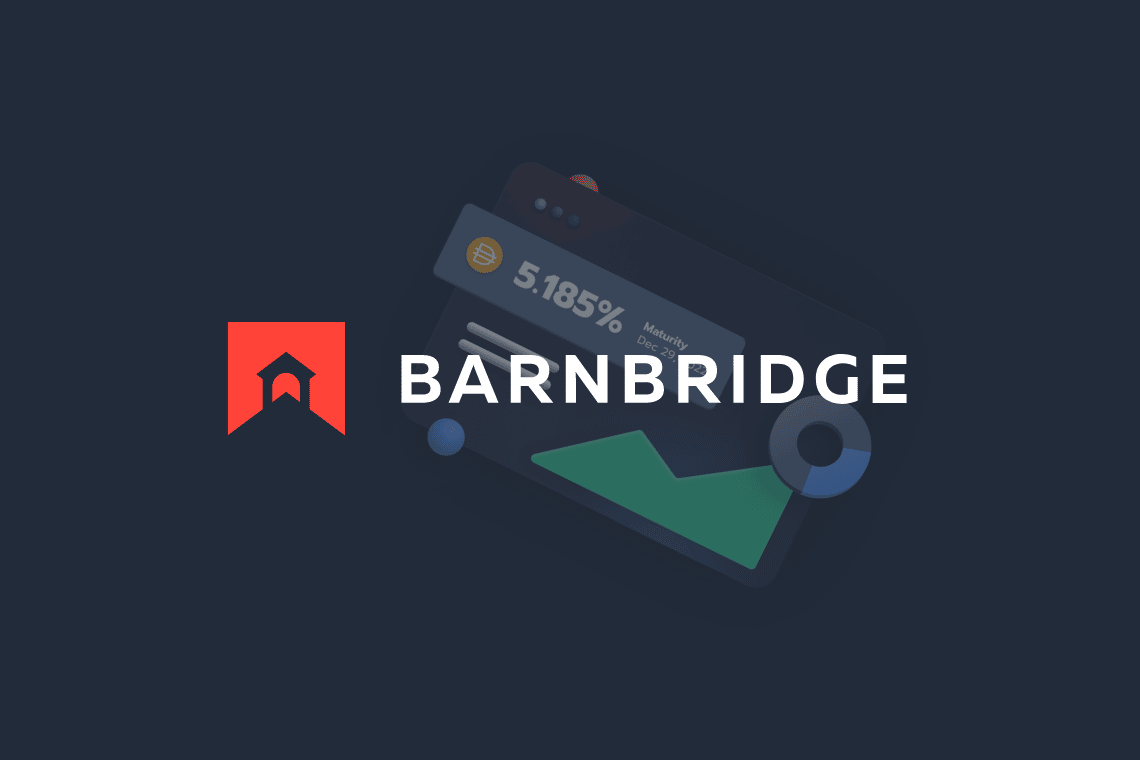Many DeFi protocols are used mainly because of the interest they pay on crypto deposits. Among them is a particular one called BarnBridge.
While on the one hand there are many DeFi protocols that offer very high interest, on the other, these very high interests have a couple of problems.
Summary
The problems with interests in DeFi
The first problem is that these interests are often not paid in stablecoins or major cryptocurrencies, but in tokens with highly variable market value.
The fact is that the percentage promised is not calculated in dollars or stablecoins, but in number of tokens paid. And so even if that percentage is very high, in the event that the token with which you are repaid loses value over time, the real percentage of gain is much lower.
In other words, the rates promised or displayed are calculated on the nominal value of the number of tokens paid to investors, and not in the real value corresponding to the real purchasing power of those tokens.
Rather, if the tokens being immobilized are to be purchased in the market, in the case of a sharp decline in their value there is a possibility that the real return on investment will be negative even in the case of very high interest rates.
However, this reasoning does not apply when real stablecoins are immobilized and interest is collected in the same stablecoins.
For example, the interest rates promised by BarnBridge are calculated in DAI, which is one of the main stablecoins.
The second problem, which is the specific one that BarnBridge aims to solve, is that the rates promised by many DeFi protocols are often variable, meaning that over time they generally change by decreasing.
These two problems are then also compounded by the risk of smart contract implosion, because in the event that funds are immobilized on a vulnerable or buggy smart contract there is always the risk that they could be stolen or could be lost forever. Unfortunately, it is not at all easy to tell which smart contracts are well designed and implemented, and which are not.
The fixed interest on crypto from BarnBridge
BarnBridge‘s proposed solution to the second problem is fixed interest.
That is, the interest promised by BarnBridge over the 12 months does not vary over time.
Since it is impossible to predict how variable interest will vary over time, there is a risk that it will fall so low as to make the investment unprofitable, or even counterproductive.
Instead, BarnBridge promises fixed returns, eliminating this problem at its root.
This is why it does not offer high returns at all: somewhere in the range of 5% per annum for a pre-determined period (90 days). When the period expires, a new fixed interest rate will eventually be set that is valid for the entire 90-day period.
So far they claim to have distributed $13,500 in interest, and to have more than $1.2 million immobilized on their smart contract. However, in total to date there appear to be only 17 active users.
Certainly the 5% per year staggers in comparison to the double- or even triple-digit interest rates sometimes promised by DeFi protocols, but at least it is fixed and is calculated and disbursed in stablecoins.
What is BarnBridge
The project was conceived in 2019, which is when MakerDAO started to become known by the mainstream as well. MakerDAO is the DAO that issues and manages the DAI stablecoin.
At that point, the idea arose to create an alternative to the DeFi protocols that offered very high but unsustainable interest rates to better manage risk.
The goals of the project are to remove barriers to entry by making structured crypto derivatives easier to understand, and to offer a high level of security through verified smart contracts.
The BarnBridge team includes the Aave founder Stani Kulechov, Synthetix founder Kain Warwick and BarnBridge co-founders Tyler Ward and Troy Murray.
BarnBridge’s DAO is based on the BOND governance token, launched in 2020.
BarnBridge’s BOND crypto
The initial launch price of the BOND token in the crypto markets was evidently exaggerated, as from the initial $117 in October 2020 it plummeted almost immediately to $21 in less than a month after launch.
So $21 is the figure to take as a benchmark for making comparisons.
During the last big bull run, the price came close to $90 in March 2021, that is, almost quintupling the value at the end of November the year before.
Since then, however, a long descent began, culminating in June 2022 at $2.3. So from March 2021 to June 2022 it lost almost 98% of its market value.
But then in the following months it did not fall as far, with even a very brief return above $21 in July of the same year. In other words, in July 2022 it tried to get back to the level at which the 2021 bubble had begun to inflate, but without succeeding.
In fact, it subsequently plunged back to $3, although in early 2023 it rose back to at least $5. The current share is 75% lower than that $21 in November 2020 from which that momentum started.
Indeed, only 17 active users, and an APR of 5%, give a good idea of how little appeal this project manages to have within the DeFi ecosystem, and its $1.2 million TVL is nothing compared to MakerDAO’s $7.2 billion, for example.
At this time, it is hard to imagine how this project might evolve, and whether it might achieve a fair amount of success sooner or later.




